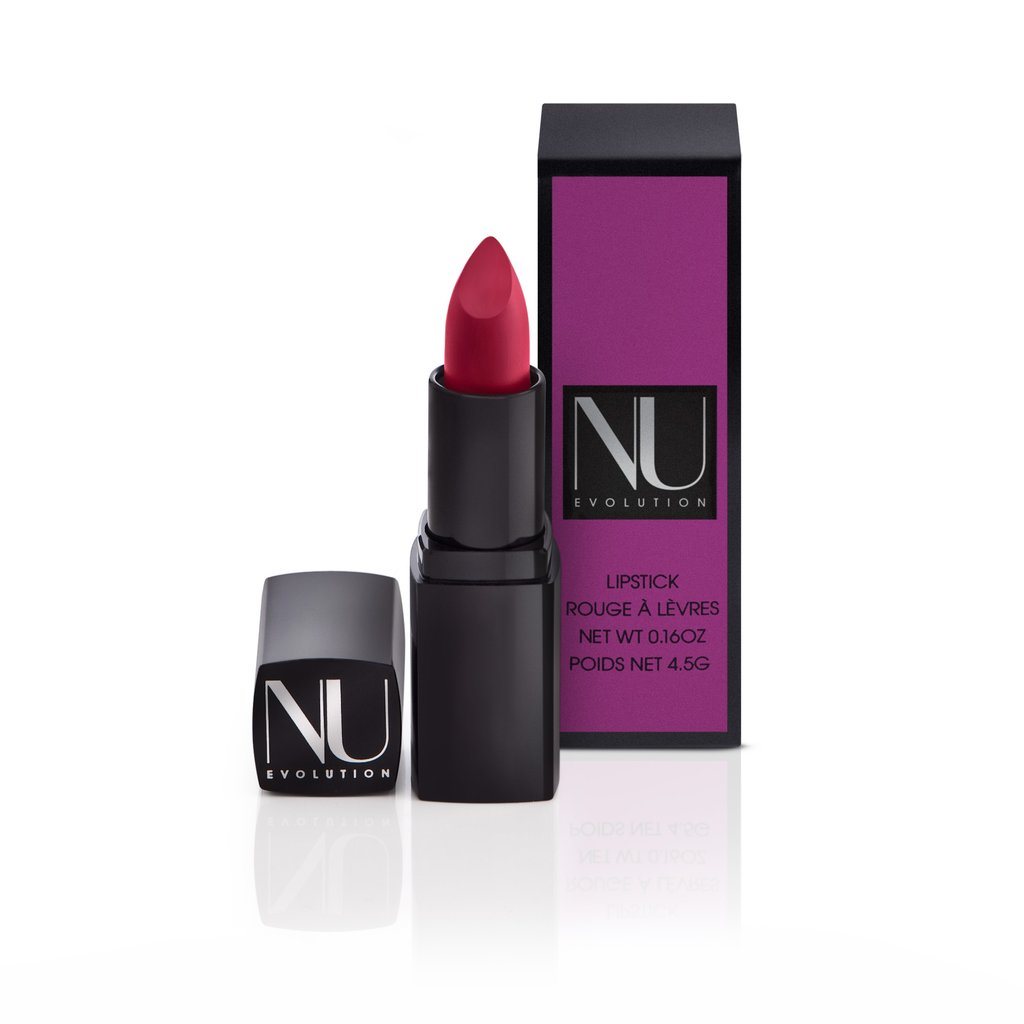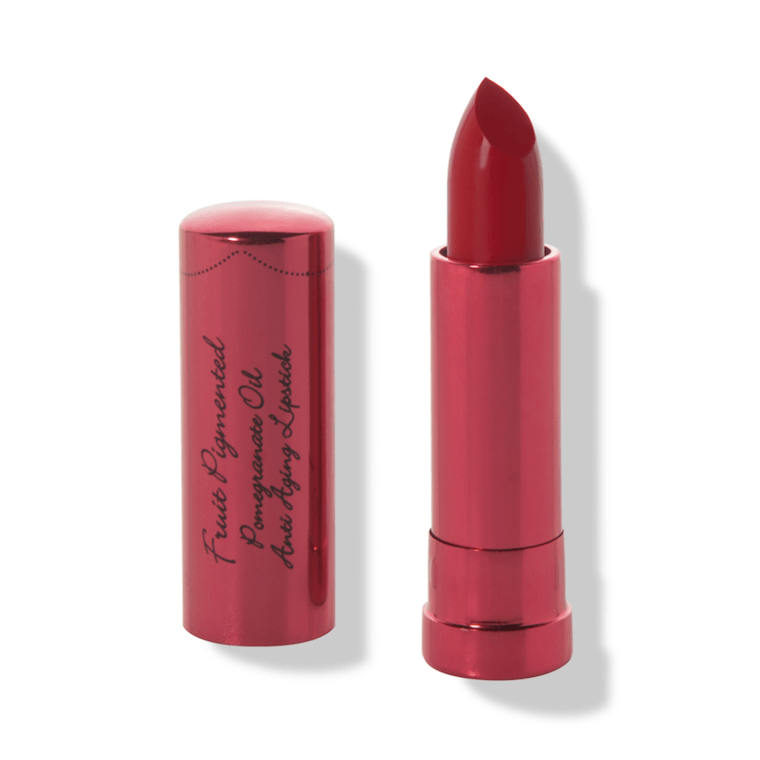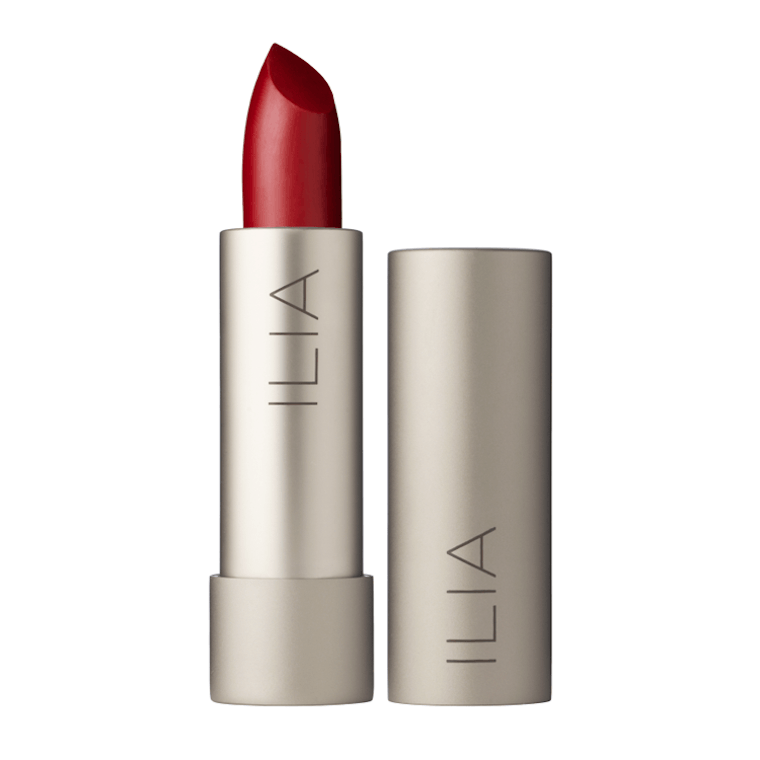A little something I've noticed while on the hunt for a true-red lipstick made by cleaner beauty brands: The pickings are pretty scarce out there. Sure, oxblood shades and vivid pinks abound. But when it comes to finding that not-too-blue, not-too-orange, not-too-ruddy red (like the kind Marilyn Monroe might have worn) ingredients like carmine (red pigment sourced from crushed beetles on Peta's no-no list) and synthetic dyes usually win out.
It made me wonder: with all the innovation that’s been made in the green beauty space—like creamy highlighters built from coconut oil (a la, RMS Beauty Living Luminizer) and jet-black liquid liner with skin-care-like formulas (W3ll People Expressionist Liquid Eyeliner)—what makes a true red lipstick the unicorn of clean makeup products?
Susan N. Raffy, a cosmetic chemist with more than 30 years of experience in formulating products explains that, for lipstick to retain its color, it must include oil-soluble as well as oil-dispersible colors. Some of these may be found in nature, like titanium dioxide, beets, and turmeric, as well as the aforementioned carmine.
Others may be synthetically produced, like FD&C (food, drug and cosmetic) dyes like “red 40” as well as “red 6 lake”, both of which are commonly used to make true reds and are FDA-approved and tested for heavy metals. But some clean cosmetic makers dodge them anyway, citing customers’ adversity to using petroleum-derived products on the skin and allergenic properties in the some of dyes themselves. The FDA itself notes: “it is possible, but rare, to have an allergic-type reaction to a color additive. For example, FD&C Yellow No. 5 may cause itching and hives in some people.”

{{post.sponsorText}}
Given that not so comforting confirmation (to say the least!), opting for a natural lip color that contains plant-based pigments seems like a no brainer, right? The issue is that if you're looking for a classic, true red that stays put past your a.m. coffee, there’s a hangup. Unlike all the other shades you may swipe on, dense reds with lasting power are tricky to formulate without some animal-derived ingredients, fruit pigments, or even a hint of FD&C dye, so I conversed with dermatologists and chemists to find out how they're commonly created.
Keep scrolling to see the common ways red lipsticks are pigmented.

Carmine and beeswax
For those who don’t mind tapping animal products like carmine or beeswax in a quest for true red, the color and wear payoff can be pretty darn good. Nu Evolution Lipstick in Nolita includes beeswax (plus physical minerals) to make its bright red shade (although it is a touch more sheer than traditional formulations).
But add the non-vegan, beetle-derived ingredient carmine (a centuries-old pigment thought to be used since Cleopatra’s time), and the hue can look rich and is more likely to withstand fading. A few solid choices: Dr. Hauschka Lipstick in Amarylis, which uses a combination of carmine and minerals to make its shade both bright and long wearing. While Rituel de Fille Forbidden Lipstick in Written in Blood is matte and vibrant AF.

Plant-based pigments
For vegans or those who don't want to use synthetics, your options are small yet mighty thanks to purveyors like cosmetic chemists like Susie Wang, founder of 100% Pure Cosmetics. “The biggest challenge was to get a vibrant, balanced red color,” she says. “A ‘true’ red lipstick has to be perfectly centered—not too warm and not too cool—so, we balance it with the right amount of warmly colored plant pigments like turmeric and tomatoes and lots of cool pigments like blackberries.” The result: 100% Pure Cosmetics Fruit Pigmented Pomegranate Oil Anti Aging Lipstick in Poppy. This true red is formulated without the use of carmine or synthetic dyes or chemicals. While these formulations are wonderfully rich and hydrating, more frequent application may be needed because they can slide off easier than a matte lipstick.
If you're allergic to fruits, however, take note: Because just like some fruits can spark allergic reactions, the pigments from which they are derived may do the same. “In some people, the proteins in the fruits can cause a skin reaction," says Raja Sivamani, a dermatologist and associate professor of clinical dermatology at University of California, Davis who specializes in Ayurvedic medicine. "Some culprits include kiwi, pineapple, lemon, banana, and fig based proteins." The trick to avoiding such reactions? Know your body. “While allergies are uncommon, if a person has a known food allergy or sensitivity, then that food should be avoided in lipsticks as well," he says. "The possibility of an allergy is always present, especially in naturally derived extracts that can have multiple chemicals as part of the extract.”

Clean + synthetic pigments
And so, the last way to devise a true red that checks all the beauty boxes, is one that contains a hybrid of naturally derived and clean synthetic ingredients. “A bold, true red lipstick is incredibly hard, if not yet possible, to develop without using ingredients like carmine, artificial dyes, or fruit pigments,” says Emi Kamiya, vice president of marketing at Hynt makeup. So, the beauty brand launched a separate lipstick line with just one shade: Hynt Beauty Aria Lipstick in Red Fervor. The ultra-shiny, moisturizing, and bold shade doesn't stay on all-day, but the color payoff is considerable. “This lipstick contains a hint of FD&C dye to give it that blue undertone that a classic red has,” Kamiya says.
This hybrid strategy, which lightly pulls from FD&C dyes in the name of performance, is one that Ilia Cosmetics founder Sasha Plavsic uses, too. (Her Ilia Cosmetics Lipstick in Strike It Up proves that a touch of synthetic dye can pack a major punch.) “We always start with a base of mineral pigment and then add very low percentages of synthetic coloring when necessary, which is mostly for bolder lip and cheek hues,” she says. “We truly feel that in name of clean color cosmetics, there needs to be an openness to using certain synthetic ingredients to enhance the performance of a product." The bottom line: The red that's right for you depends on your lip aspirations and skin considerations, so you better get to swiping.
Looking for some party-makeup inspo? Here's how to get super glowy skin with shimmery highlighters, and this is how to create a cat-eyed look.
Loading More Posts...